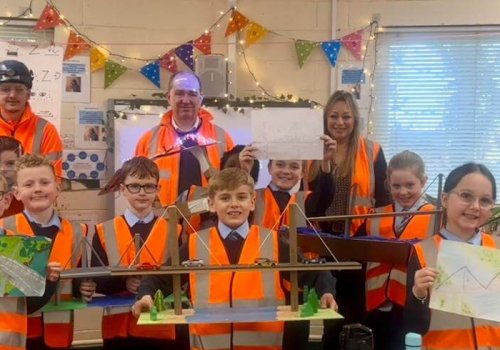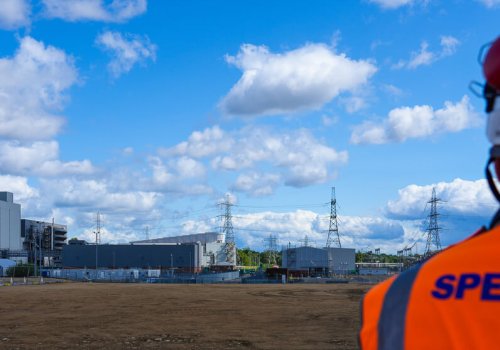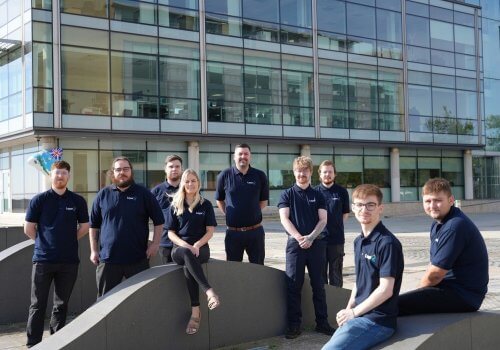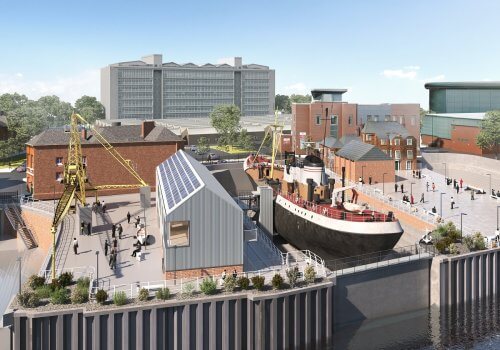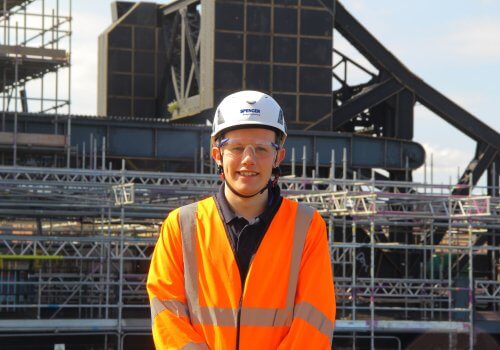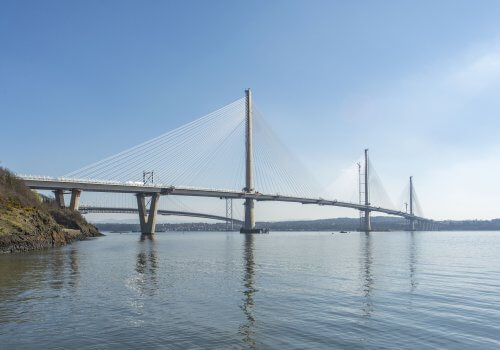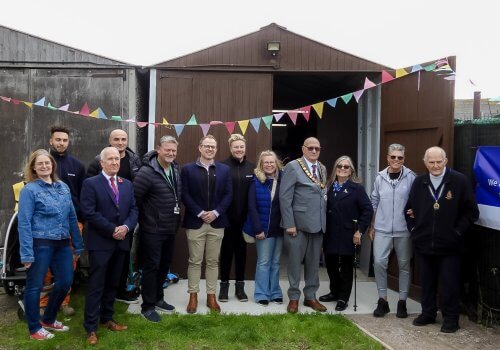Four huge “Cable Crawler” gantries have been shipped to Denmark in a celebration of British engineering and manufacturing excellence.
Spencer Group, a world leader in bridge engineering, has delivered the gantries in readiness for work to begin on the world’s largest retro-fit cable dehumidification project, to be carried out on the Great Belt crossing.
The gantries, weighing a combined 88 tonnes, were transferred from workshops near Spencer’s headquarters in Hull to the city’s docks for loading onto a cargo vessel for the three-day sailing to the Danish port of Korsor. They carry prominent “manufactured in the UK” branding, reflecting the pride of Spencer Group that a system designed, developed and manufactured in Britain is instantly recognised across the global bridge industry.
The delivery of the structures is especially symbolic as Hull is set to become a world-class engineering and manufacturing centre following the announcement that £310m is to be invested into Siemens wind turbine plants on the banks of the Humber as a marine renewables super-cluster develops around the estuary.
The Cable Crawlers will enable vital work to prevent corrosion of the main cables on the East Bridge, the third largest suspension bridge in the world, which is part of the giant Great Belt Crossing linking the eastern and western parts of Denmark.
Spencer Group Project Director Jim Mawson said: “This is, and will remain, the largest retro-fit suspension cable dehumidification project ever to be undertaken anywhere in the world, as the only two bridges that are bigger were constructed with dehumidification technology pre-installed.
“We are proud to be working with our supply chain partners on this highly prestigious international project that showcases the very best of excellence and innovation in British engineering and manufacturing.
“This is a unique system – nobody else has developed an access system like this. It has been conceived, designed and manufactured in the UK and is constantly being updated and improved as global demand increases. The Cable Crawler system has been used several times successfully in Britain and, more recently, in Europe, for a variety of high-level suspension bridge projects.”
The Cable Crawler gantries are each 33 metres long, 4.5m high and 3.5m wide and are the largest ever to be built. The size is directly related to the cable structure of the East Bridge and means engineering crews can easily access a full panel of the main cable without obstruction.
They were transferred from the workshops of Spencer’s chosen fabrication engineers ESL GB in Hull on trucks before being lifted on to the 2,200-tonne Dutch-registered cargo vessel Filia Nettie at the city’s Alexandra Dock. Three of the gantries made the voyage stored in the hold, along with other equipment bound for the project, with the fourth on deck under a bespoke waterproof cover.
Meticulous preparatory work is now underway at the East Bridge before the project begins in earnest next month (April). The flagship project is scheduled to be completed by the end of October 2014, a programme which would simply not be achievable without such innovative access.
The Cable Crawler system showcases manufacturing and engineering excellence by Spencer Group and a tried and trusted supply chain, based in Spencer’s home city of Hull or elsewhere in Yorkshire.
As well as manufacturer ESL GB, of Hull, partners in the project include engineering design consultancy Eadon Consulting, based at the Advanced Manufacturing Park in South Yorkshire; Armstrong Hydraulics Services of Hull; Major Electrical Services of Hull; winching specialists ALPS, of Dronfield, near Sheffield; and mechanical and electrical contractor Pennine Control Systems, of Huddersfield.
Spencer Group has previously used the world-leading Cable Crawler system to allow high-level access for the dehumidification of cables on the Forth Road Bridge in Scotland; the M48 Severn Crossing; Humber Bridge; and Alvsborg Bridge in Gothenburg, Sweden.
The innovative traversing system enables the negotiation of the cable infrastructure without returning the gantry to the bridge deck, thereby eliminating the need for lane closures or other traffic management measures after initial installation. This is a huge benefit for operators of structures which form a critical part of the transport and socio-economic infrastructure.
The gantries have also been designed to guarantee 100 per cent containment of personnel and tools – vital when work is being carried out hundreds of feet above the bridge deck.
Spencer Group is delivering the dehumidification project for client, A/S Storebaelt. Spencer Group will wrap every inch of the main cables in an elastomeric wrap known as Cableguard. As each section is wrapped, the Spencer team will use thermal blankets to heat the wrap and create a continuous airtight seal around the main cables.Permanent plant rooms are then set up inside the deck box girder which take in air from the atmosphere, dehumidify it, and pump it inside lengths of the wrapped cables.
The dehumidified air absorbs moisture inside the cables, carrying it out to the atmosphere at an exhaust point further along the cable.The process is repeated until the entirety of main cables have been dehumidified, thus preventing corrosion and extending the life of the bridge.
There are around 150 suspension bridges worldwide and all but the most recently constructed are likely to require dehumidification treatment to protect the cables, opening up a huge international market for such projects.
Spencer Group is now actively pursuing opportunities across the globe. Spencer executives have recently visited Turkey, the United States and Canada to discuss potential projects. Further opportunities are being explored in locations as far apart as Portugal and Hong Kong.
Mr Mawson added: “Dehumidification is recognised as the most cost-effective solution to arrest corrosion to main cables and prevent further deterioration and our Cable Crawler system is the most efficient and least disruptive means to deliver this and other cable structure projects.
“This project in Denmark is the most prestigious demonstration yet of our unique product and capability to preserve the long-term integrity of some of the world’s most iconic structures.”
